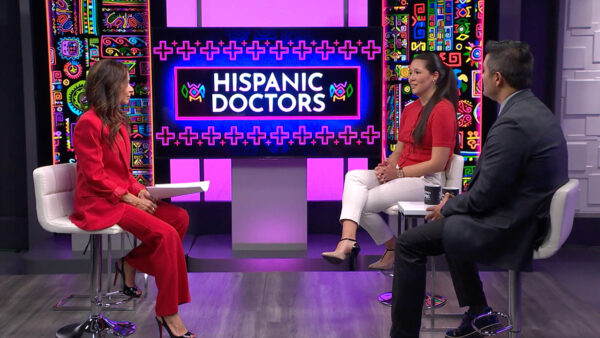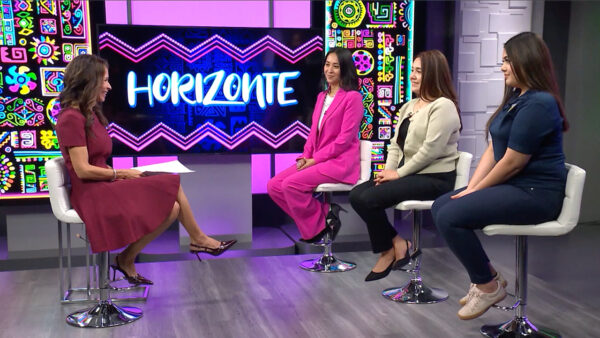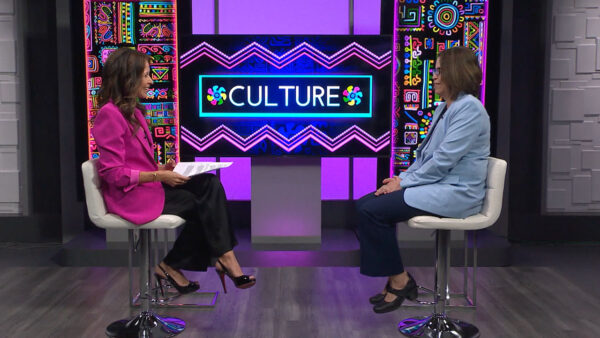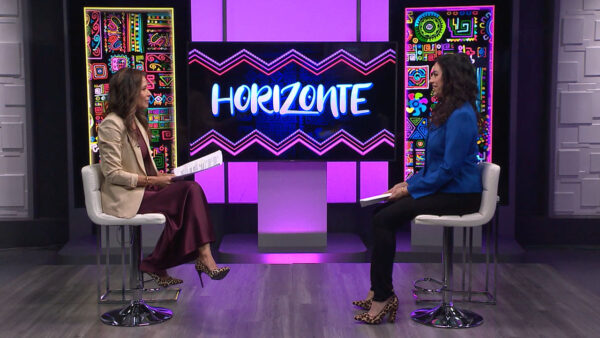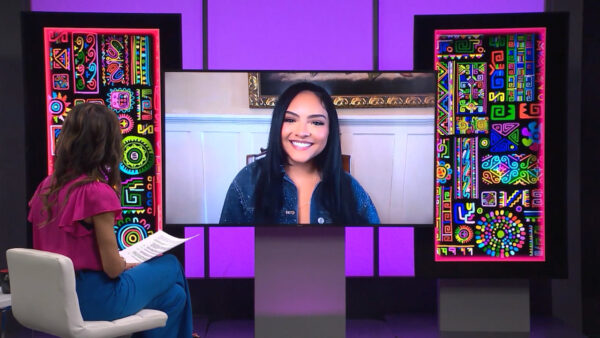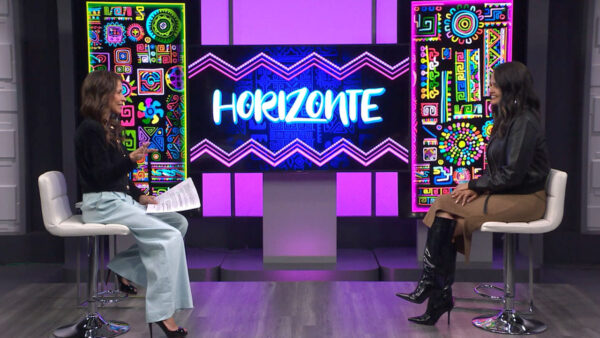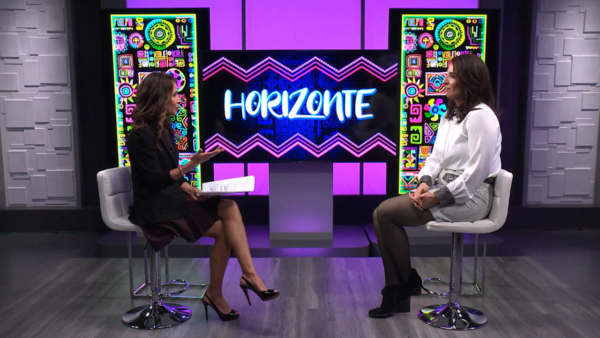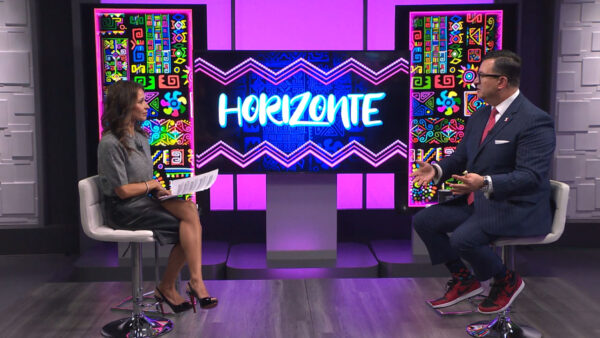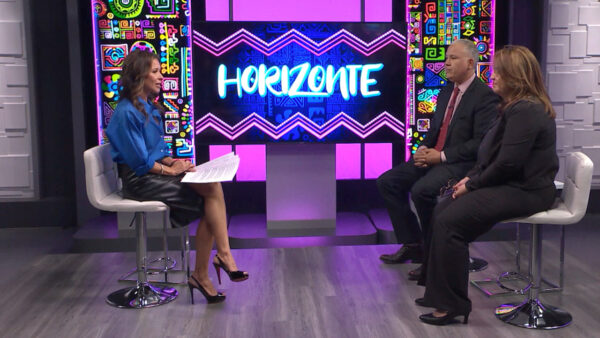In Sounds of Cultura: SOC National Hispanic Heritage Month is observed from September 15th to October 15th in the United States, when people recognize the contributions of Latino Americans to the United States and celebrate the group’s heritage and culture. Phoenix Art Museum Director Jim Ballinger and Phoenix College Professor Dr. Trino Sandova talk about the third annual Cine Latino Film Festival and other events going on at the Phoenix Art Museum to celebrate Hispanic Heritage month.
José Cárdenas: In Sounds of Cultula, SOC, National Hispanic Heritage Month is observed from September 15th to October 15th in the United States, when people recognize the contributions of Latino-Americans to the United States and celebrate the group's heritage and culture. The Phoenix Art Museum is celebrating Hispanic heritage with festivities, which include the Cine Latino film festival. We'll talk more about what is happening at the museum in a moment but first, here's one of the films being shown at the Cine Latino film festival called Hecho en Mexico.
English Subtitles for Spanish Film Clip: We are the authors of our own movie. I think now we are ready to finally recognize the cultural diversity of our country. Spirituality is beyond religion. Religion has divided us. Spirituality bonds us. What has to shine are the different Mexicans, the Mexicans who find their own way to assume their origins, their sense of identity. This thing that we can't satisfy, I think is the engine of life. It's like the horizon… when you move forward, the horizon moves away. But you've advanced. All of us have heart, soul, life, dreams, feelings, hopes.
José Cárdenas: Here now with me to talk about Hispanic Heritage Month is Jim Ballinger, Director for the Phoenix Art Museum. Also here is Dr. Trino Sandoval with Phoenix College. Dr. Sandoval is also the founder of the Phoenix College Latino Film Festival. Welcome to both of you. You've been on the show before, we've talked about a number of issues. Trino, you're the founder of the Phoenix College film festival, Latino film festival, but you're involved with this particular project with selections of the films.
Dr. Trino Sandova: Yes. I'm also part of the Latin-American arts alliance, which is an association of the Phoenix Art Museum and through that, I was able to work with the museum staff to select the films for this series.
José Cárdenas: As I understand, we're talking about six films.
Dr. Trino Sandova: There are six films left in the series. They are films from Latin America, they're all feature films, documentary films or short films.
José Cárdenas: Now, the clip we saw, the trailer, Hecho en Mexico, Made in Mexico, in some ways it looks like it's a promotional marketing thing but as I understand it was intended to show the diversity of the Mexican culture.
Dr. Trino Sandova: Yes, the documentary is by a director from England, his name is Duncan Bridgeman. He spent a year in Mexico, traveling throughout the country, interviewing musicians, interviewing poets, interviewing film directors, so that he can --
José Cárdenas: I saw Diego Luna I think in that trailer.
Dr. Trino Sandova: Yes, Diego Luna was in the clip and also Diego Luna has a short film as part of the series that we are going to showcase in the next few days, but the actual documentary Hecho en Mexico showcases different genres of Mexican music from ranchera music, norteno music, rap Mexican music --
José Cárdenas: Symphonic music.
Dr. Trino Sandova: That's right, and also danzon music from Bela Cruz as well and there are some great interviews with great artists such as the Chavela Vargas who passed away recently and she's an icon of Mexican music, of ranchera music.
José Cárdenas: So Jim, and Trino, I'll come back to you because I want to talk about some of the other movies but the movies are just one part of what the Phoenix Art Museum is doing in September and October.
Jim Ballinger: Right, José, we've been for many years been very involved with Hispanic Heritage Month and this year we have an additional film. Trino was just terrific in helping us out. We're helping FOMA, Friends of Mexican Art, which is an organization in town, celebrate 50 years of activity with an exhibition. And Rufino Tamayo's prints, Tamayo's a major Mexican artist in the 20th century in the museum, and other lenders locally, including the university, us, and private collectors came together for the show. We're also doing an exhibition that opens October 2nd of Xul Solar and Jorge Luis Borges
José Cárdenas: The famous artists.
Jim Ballinger: And they had a great friendship. This was an exhibition created by the Solar museum in Argentina in conjunction with the Americas Society of New York City. [ Overlapping Speakers ]
José Cárdenas: We've got images we want to show of some of this work that's quite interesting.
Jim Ballinger: Yeah, and it's kind of 1940's, 50's. Paul Klee liked people --
José Cárdenas: One of the images on the screen right now.
Jim Ballinger: They're very, very festive and these two giants in their own area were very good friends and so the show was put together by the Americas Society in New York and they're coming here with The Holly Foundation helped. It demonstrates this incredible fascination with each other and how literature informs art and how art informs literature, which we don't get a look at a lot. Included in this exhibition is not only the wonderful paintings but correspondents and memorabilia between these two artistic giants from Argentina.
José Cárdenas: The first exhibition, Tamayo, runs from when to when?
Jim Ballinger: It opens on September 21st to January 12th. And FOMA is also doing a project with the airport, the airport gallery, looking at Mexican art collected from around the valley so if anybody's flying through Sky Harbor, they should see that as well.
José Cárdenas: And the Xul Solar and Borges?
Jim Ballinger: It opens on October 2nd through the end of the year, December 31st.
José Cárdenas: Trino, we mentioned that there's six films left in the series. Let's talk about a few of the other ones. Which one do you think is most impactful?
Dr. Trino Sandova: There's a film from Argentina being screened on September 15th, it's a Sunday at one p.m. called Clandestine Childhood. It takes place in Argentina in the 1980's during the Dirty War. It's about a family who was exiled to Cuba and they decided to come back to Argentina with false identities to continue the fight against the military junta. What makes it more impactful is we get to see the atrocities, the horrors of the military junta from the perspective of a 12-year-old boy. It's a very impactful film. Another important aspect about the festival is that we have film scholars that present the films and they engage the audience in the film discussion after each showing.
José Cárdenas: Why do you think it's important to do this? In what way does this really amplify the reach of the Hispanic culture? Because I would take -- I would assume many of the people you're reaching are the choir, you're preaching to the choir, these are the people who appreciate the Hispanic culture, anyway.
Dr. Trino Sandova: For example, this particular film from Argentina is important because the military junta came to power by overthrowing a democratically elected president. And we were hoping that there wouldn't be cases like that anymore but just recently in Honduras, a democratically elected president was overthrown and a military took over the government. So we're trying to showcase the history that repeats itself. That's not something that only impacts Latinos. It impacts everybody. It's important for us to be informed.
José Cárdenas: Let's talk about the other films.
Dr. Trino Sandova: The other film that we're going to show is called Tanta Agua. It's about family relationships. It's a story about coming of age of a young girl.
José Cárdenas: Tanta Agua, meaning so much water.
Dr. Trino Sandova: That's right, and it's significant because the story line is about a divorced father who picks up his young son and teenage daughter to spend a week in Uruguay, but as the title of the film suggests, so much water, they are rained in so they are forced to spend the whole week in a hotel room in the premise of the hotel without Internet, without cell phones and without television. They have to really bond together and rekindle the love that they had before the divorce. So there's different themes and different genres for every different film.
José Cárdenas: Jim, what is the museum doing to promote the efforts in the various shows that you've got going?
Jim Ballinger: Well, we're advertising, we've got all kinds of social media out there. We also have -- I think the long-standing of a lot of the programs, we've built quite an audience base over the years, and I think to what Trino was saying, the art museum can be a place where the community comes together to discuss and understand complex, tough issues and we're happy to serve that role. So that's another reason for the selection of these kinds of films and to look at exhibitions like Solar and Borges. Both tough customers as far as artists being very critical of what went on and if you look at the development of this community and certainly with the future of our community as a melting pot of more and more not just Mexico but Latin America, I think we have a very important role and we collaborate a lot with the university and with Phoenix College and others to be a place where people can feel comfortable coming together to look at some things they might not normally look at. I think that's our real mission here.
José Cárdenas: I know because we've had you on this show many times and not just in September and October that the Phoenix art museum has had a long-standing commitment to Hispanic culture. Expand on that a little bit.
Jim Ballinger: One of the very first shows we did, we opened in 1959, was a Mexican exhibition, one of the first objects to come into our collection was Mexican art. We've done a lot with Mexico over the year with FOMA. In recent years, we have a curator for Latin-American art, we have a Latin-American art alliance, Mexican art is not part of the museum but we partner a lot. So, you know, we saw that as very important. Earlier this year, we did Order and Chaos.
José Cárdenas: We had you on the show to talk about that.
Jim Ballinger: Which is one of the great private collections of Latin-American contemporary art, it's one of the most important in the world. And to have that based here and be able to use that is spectacular. We've partnered with CALA, we've partnered with other stations in town as well to reach out and the other thing we're very proud of is that the museum has a real role to be accessible to as many as possible. The museum remains open on Wednesday evenings for free and our board struggles with that a little bit with revenue but they also realize we're here for everyone and to get people in the door with experimental programs, broadening out to deal with literature, film, in addition to the visual arts, which is our traditional base.
José Cárdenas: Trino, we're almost out of time but I do want to talk about the fact that the films that were selected are recent award-winning films.
Dr. Trino Sandova: Yes. The selection of films, we wanted to select films from recent years so all of them are from 2012, 2013 and 2011. And we wanted to select films that have already been selected in other film festivals,that have won awards. One of the films that we're screening is by Carlos Reygadas who won the coveted best director prize of the last year's Cannes Film Festival in France, That film is called Post Tenebras Lux, which is Latin for light after darkness, which is a very experimental art film that creates a lot of great discussion with the audience.
José Cárdenas: Sounds like one of many to see and thank you both for joining us here on "Horizonte" to talk about this. That's our show for tonight, from all of us here at "Horizonte," I'm José Cárdenas, have a good evening.
Jim Ballinger:Director, Phoenix Art Museum;Dr. Trino Sandova:Professor, Phoenix College;












